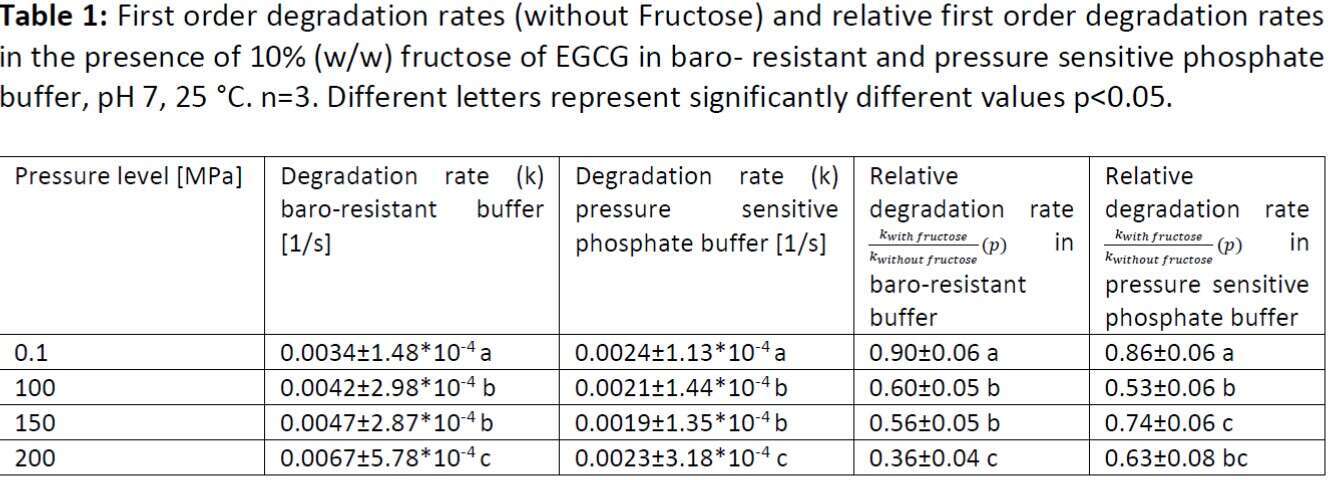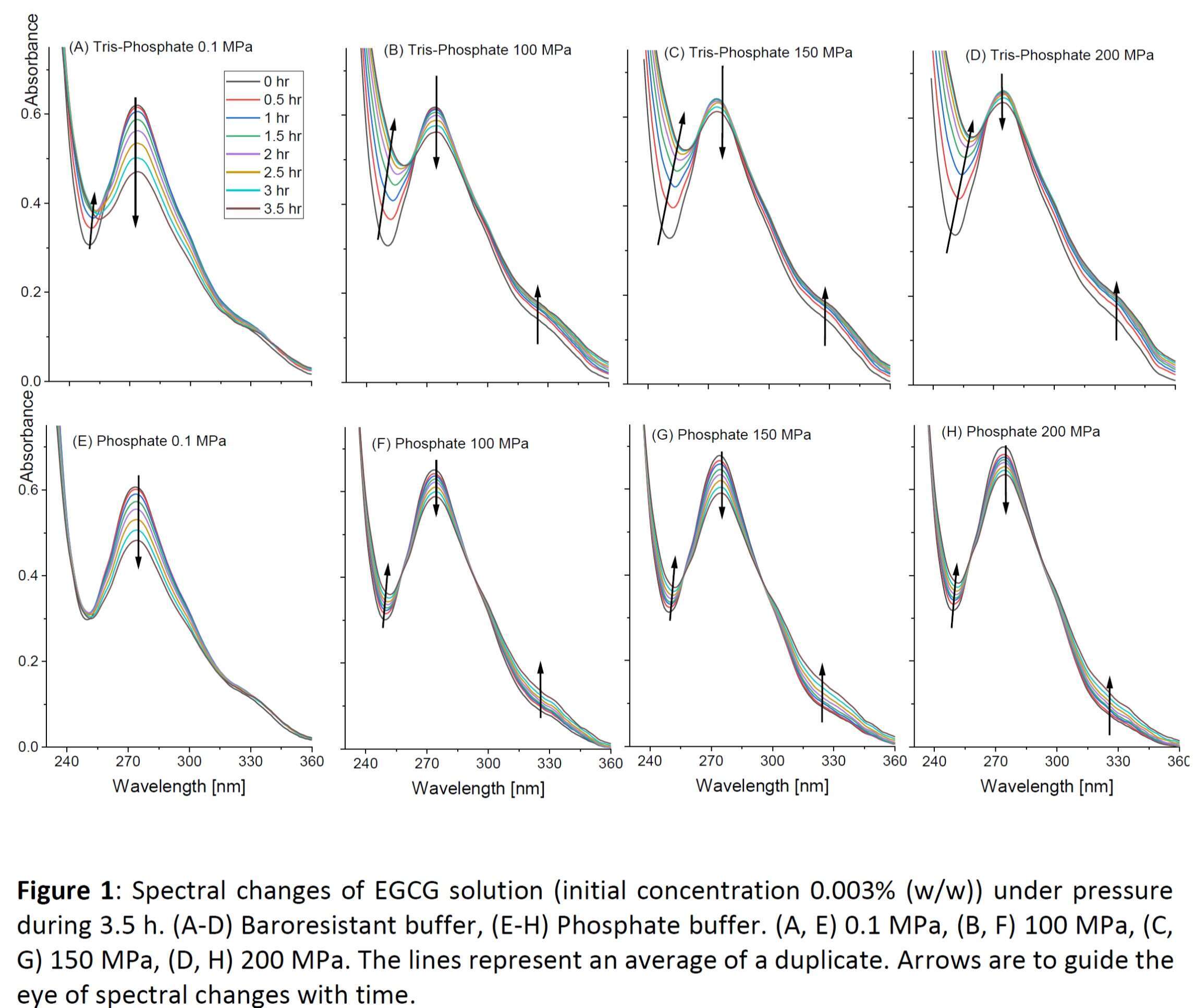
Invited
The effect of pressure on the kinetics of polyphenolics degradation – implications to hyperbaric storage using Epigallocatechin-gallate as a model
Reaction kinetics at elevated pressures is of importance for the development of pressure-based technologies and especially for hyperbaric storage (HS), a potential alternative for the energy-consuming refrigeration. While the effect of pressure on reactions in equilibrium is well reported, the effect on reaction kinetics in foods is less studied. Degradation of polyphenolic compounds is a set of reactions often resulting in numerous degradation products. The effect of pressure on degradation kinetics of a model polyphenol, EGCG (Epigallocatechin-gallate), was explored at pressures up to 200 MPa (HS levels) for several hours, with and without fructose. As can be seen in Table 1, in a baro-resistant buffer, pressure enhanced EGCG degradation, due to a negative activation volume (ΔV≠=-6.87 ± 1.54 [cm3/mol]), while in phosphate buffer the pH decreased (as is also expected to occur in many foods) resulting in a superposition of accelerating and protective effects. A previously undescribed protective, pressure-level dependent, effect of fructose was identified (Table 1). Novel in-situ spectroscopy (Figure 1) and HPLC analysis revealed that in addition to the effect on EGCG degradation rate, pressure also modifies the ratios between the numerous degradation products, likely due to a varying effect on the steps involved in the degradation pathway. High-pressure enhanced the degradation rate of EGCG compared to storage at an identical temperature at atmospheric conditions, possibly negatively affecting quality under HS, yet due to other co-occurring effects, such as pH changes and the presence of co-solutes, different outcome may prevail in foods. The effect of pressure was found to go beyond the influence on the degradation of the original compound, as likely further steps in the degradation pathway (that are not fully described even at atmospheric pressure) are differently influenced, resulting, at the end of the storage, in different ratios between the degradation products, with possibly varying combined (bio)functionality.


Powered by Eventact EMS